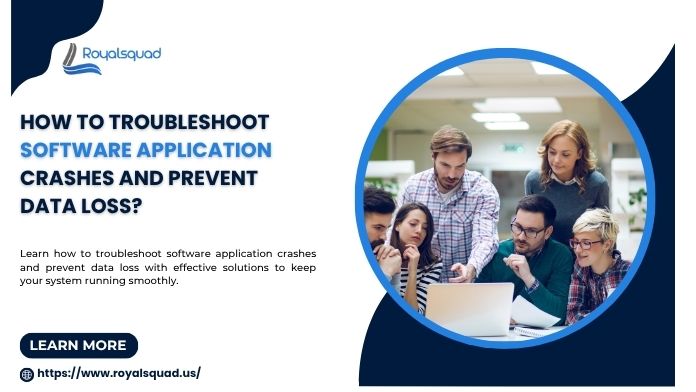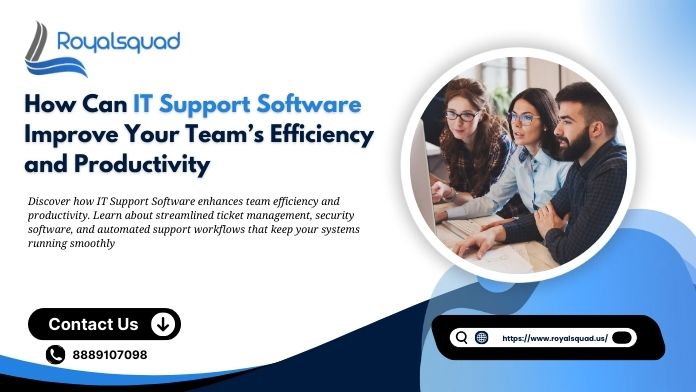
How to Troubleshoot Software Application Crashes and Prevent Data Loss?
Any software program that crashes unexpectedly and without warning can cause a great deal of frustration. Working seamlessly one minute and then encountering frozen screens, error messages, or a full system shutdown the next is a confusing experience that reduces productivity and increases the risk of data loss for any person or company that uses digital tools. However, by following the right procedures, you can improve your defenses and troubleshoot crashes more successfully. In this post, we'll go over how to handle software application failures while protecting data with Windows antivirus protection (and antivirus internet security) during such encounters.
Understand Why Your Software Application Crashed
Let's first discuss why software applications may crash:
Memory or resource exhaustion: An application runs out of RAM or CPU resources and crashes due to insufficient memory/CPU resources available, leading to its termination and resulting in a crash.
Conflicts between software: Two applications or background services competing for resources could compromise the system and destabilize it, potentially depleting them in an unstable fashion.
Damaged Installation or Corrupted Files: When installing software applications that contain missing or corrupted components, their installation can fail and lead to installation failure.
Operating system compatibility issues: Software designed for one version of an OS may misbehave on another version.
Malware or infections: Once compromised, even legitimate software applications may crash due to interference or forced termination from malware or infections on a system.
Outdated or corrupt drivers: An outdated graphics driver, network driver or peripheral driver could cause your software application to freeze or crash.
By understanding the source of issues, you can take measures to rectify them quickly - and ensure more streamlined operations.
Step-by-Step Troubleshooting of Software Application Crashes
Here is a structured process you should follow when your software application crashes:
1. Review any recent changes.
Are You Installing New Programs, Applying Updates or Modifying System Settings Recently? These may have caused the crash. Roll back any changes made recently or uninstall newly added software before testing out any applications again.
2. Review log files and error messages.
Many software applications generate logs or error messages. Take note of details such as error codes, timestamps and associated modules for further review online or with your vendor. If working with software application support services they'll likely request the log to help diagnose an issue.
3. Upgrade Applications and Systems
Be sure your software application and operating system/driver updates are current; outdated software often leads to compatibility issues.
4. Switch to Safe or Minimal mode before running.
Launch the software application in safe mode (if supported) or disable non-essential services; if this fixes it, chances are the crash was due to external forces rather than itself.
5. Scan for malware and verify security software
Utilize reliable security and antivirus software for Windows to scan your system for potential threats like malware. Such infections may interfere with processes, cause instability, and lead to system crashes; so be sure that your anti-malware Internet security suite provides real-time protection and remains up-to-date.
6. Free up resources and conduct cleanup
Unwanted background tasks, heavy startup programs or fragmented files can slow down your computer system significantly. Use cleanup tools, remove unnecessary programs and free RAM or disk space - properly maintaining a system can increase its stability for any software application you run on it.
7. Install or repair the application
If the application files have become corrupted, consider either repairing their installation with Control-Panel or uninstalling and reinstalling altogether. However, before doing either of these options it is recommended that backups or settings are exported prior to any uninstallation process.
8. Conduct the test using another machine or profile
If possible, install and test the same software application on a different machine or user profile and see if its crashes persist; otherwise it could be localised to one particular machine or user profile. If it works elsewhere but not here, it could indicate fault in either software itself or configuration settings; if not then an issue likely exists on just that one computer/profile combination.
9. Establish data-backup and recovery measures
Under no matter of effort can data loss happen. That is why you need a robust data backup strategy: cloud backups, external drives or version history so when recovering an app that has failed you have your information intact.
Prevent Future Crashes and Safeguard Your Data
Troubleshooting fixes immediate crashes; prevention keeps you ahead. Here's how you can bolster your setup:
Maintain your software ecosystem up-to-date by regularly installing updates.
Maintaining current software updates of OS, firmware and drivers reduce vulnerabilities and incompatibilities between applications. When possible, enable automatic updates.
Implement strong security software measures
An effective security software solution can protect against malware, ransomware, rootkits and older vulnerabilities - like any comprehensive solution it should also come equipped with an antivirus internet security suite to guard system endpoints and data flows.
Install effective antivirus software on Windows PCs
Windows is the OS that is most targeted, making the installation of effective antivirus software an absolute necessity. Make sure yours provides real-time scanning, automatic updates and full system scans on a scheduled basis for optimal protection.
Schedule regular backups of your data.
Data is your most precious commodity; make sure it is regularly backed up both locally and remotely (cloud) for safety's sake. Test out your backup recovery process periodically so you are assured it works when the time comes.
Monitor system performance and logs
Take a proactive approach by employing built-in or third-party monitoring tools to track CPU, memory usage, disk usage and application logs. When you notice abnormal trends (for instance high memory usage by an application) take steps before any potential system crashes occur.
Adopt minimal startup and housekeeping practices
Reduce bloat: Disable unnecessary startup apps, uninstall redundant software and run disk cleanup to minimize system bloat. A leaner system is less prone to crashes.
Define and Test Essential Applications
If you find yourself using an application regularly, running it within a sandbox or virtual environment could reduce system-wide crashes while protecting it from potential risks.
Professional Software Application Support Provides Essential Solutions
Sometimes software crashes cannot be solved through basic steps alone; therefore expert software application support services come into play to assist. From managed service providers like Royal Squad or even dedicated IT teams like our own IT teams; support is designed to cover:
Investigation and identification of complex crashes and failure logs
Review and optimization of software application environment
Integrate backup, security software and antivirus internet security tools
Training of users on safe practices to prevent data loss.
Continuous monitoring and preventive maintenance to minimize crashes recurrence
With professional support, software application crashes can be minimized and overall IT health can be enhanced.
Quick Checklist: Troubleshoot & Prevent Crashes
Here is a helpful checklist you can refer to:
Maintain the most up-to-date version of software applications.
Update your operating system and drivers regularly
Scan your system using security and antivirus software designed for Windows OS.
Review Logs and Error Messages From Software Applications
Disable any background programs which might cause conflicts.
Free up resources (RAM and disk space).
Reinstall or repair the software application if required.
Final Thoughts
Software crashes are more than just a small annoyance; they pose a risk to company continuity, data integrity, and productivity. Future crashes and data loss can be considerably decreased by using preventive measures (such as the finest antivirus software for Windows, complete antivirus internet security, and powerful security software) in addition to the troubleshooting techniques mentioned above.
Furthermore, using professional software application support guarantees that your system is robust, current, and prepared for any challenge the digital world may present. Our specialty at Royal Squad is providing this kind of all-encompassing assistance, allowing your technology to succeed rather than fail.
Please get in touch if you need help with any aspect of your software application environment, like resolving a persistent issue, improving your security stack, or creating best practices for data backup. Instead of frustrating you, your IT should empower you.





_1728455153.png)